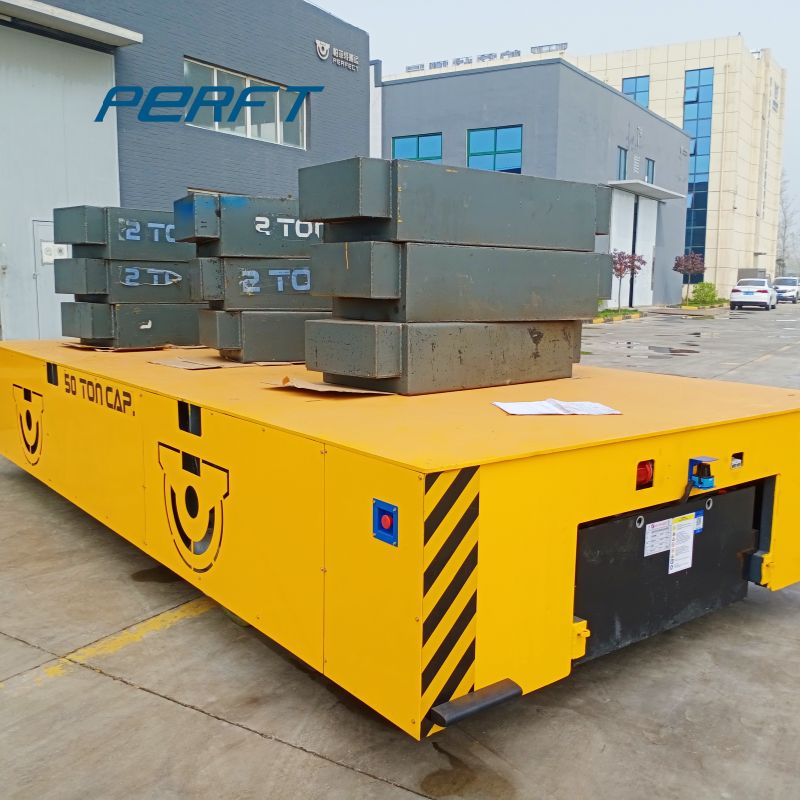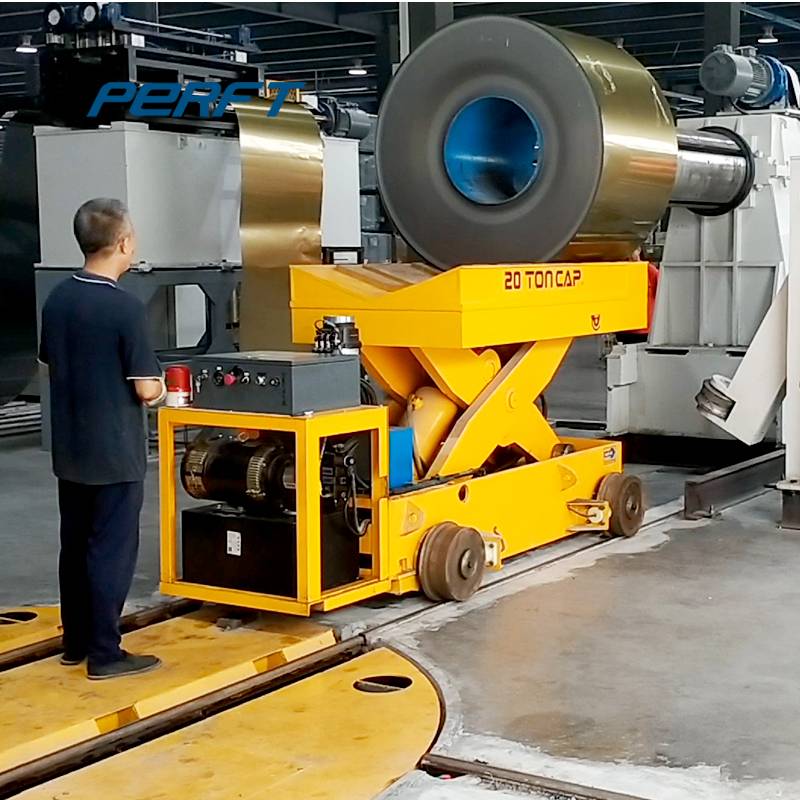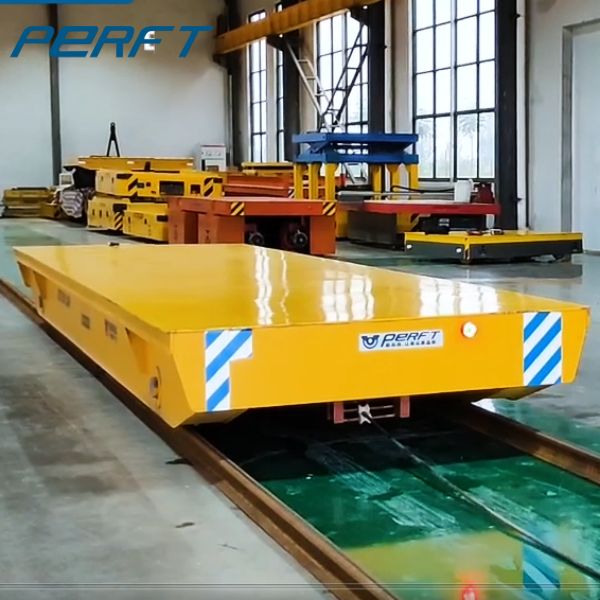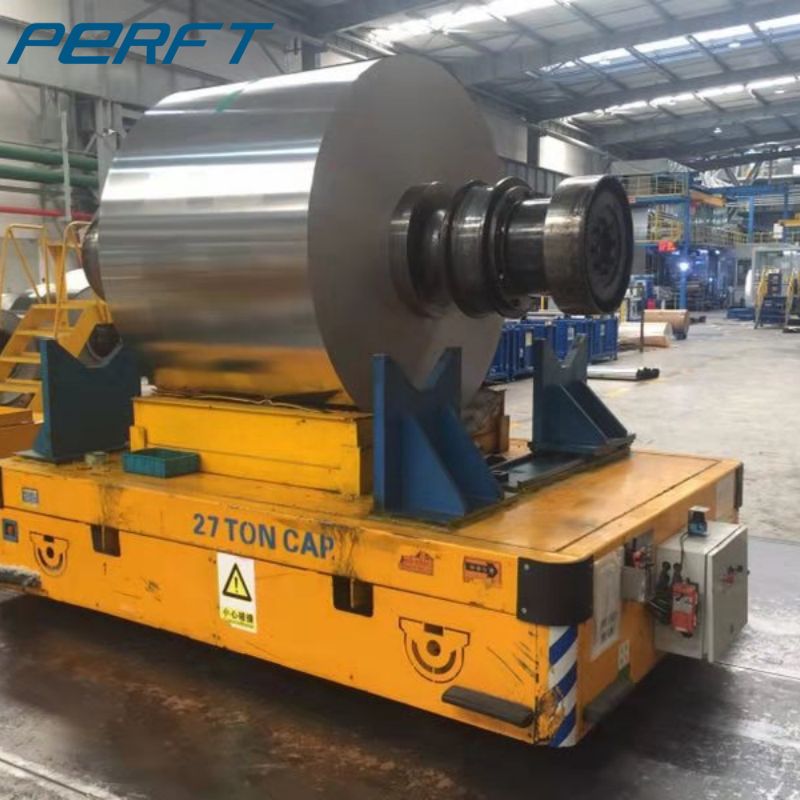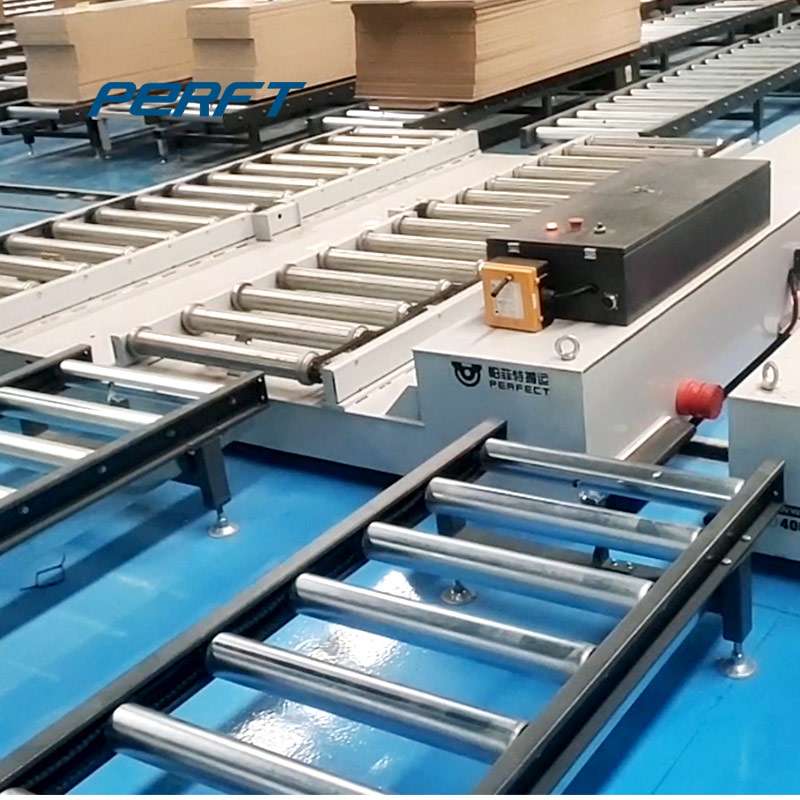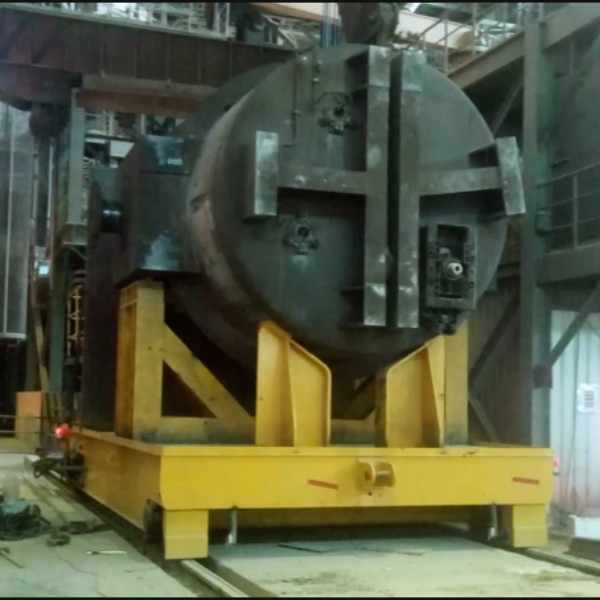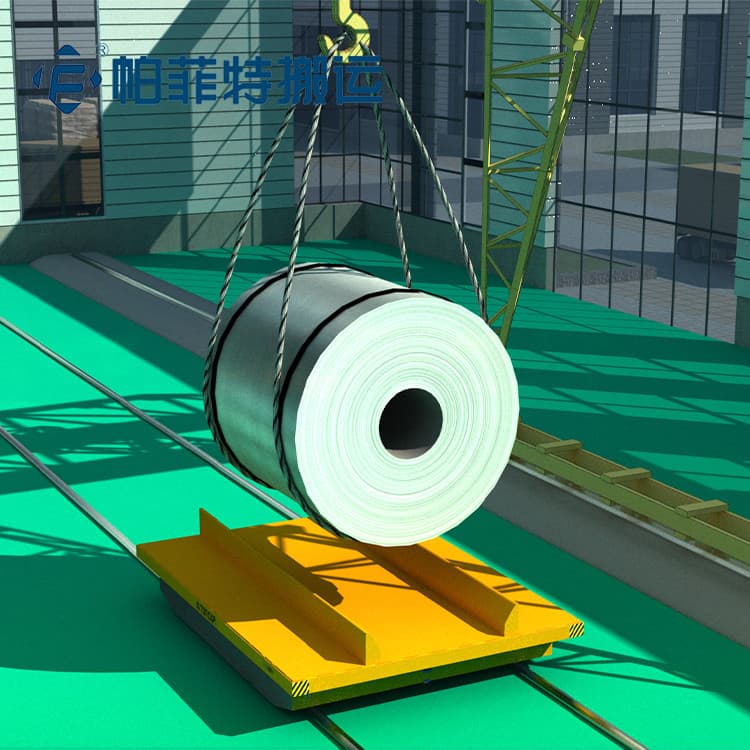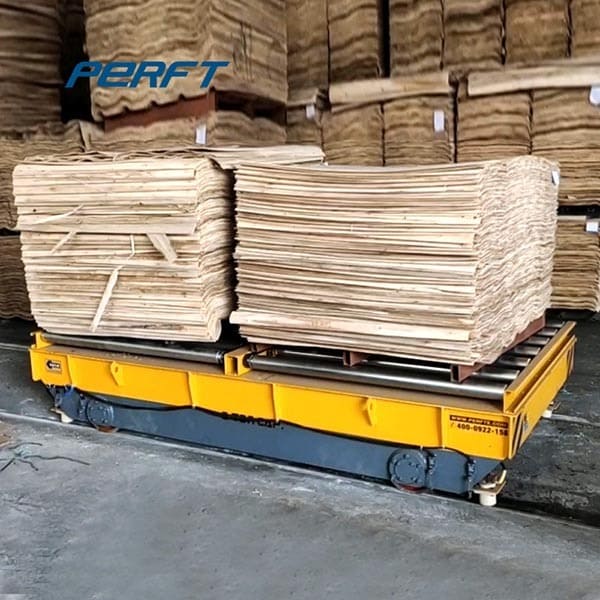Industrial Transfer Cart
Introduction
Definition of Industrial Transfer Cart
An industrial handling trolley is a type of material handling equipment used to transport heavy materials within a facility. It is designed to move materials from one place to another, especially for handling problems in tight spaces, such as from storage areas to production lines or from one workstation to another inside a factory floor. Most of the applications are in various industrial fields.
Importance of Industrial Transfer Cart
Industrial handling trolleys play a key role in the handling and transportation of materials in industrial environments. These carts are designed to move heavy loads and materials over short distances, and their unique attributes of efficiency, safety, flexibility, and low cost make them an important transport tool in the industrial sector, already an essential tool for all manufacturing, construction, or warehousing industries, etc. to move shaped heavy materials.
Purpose of Ultimate Guide
With the massive use of industrial trucks, more and more factories use transfer trucks instead of the original manual handling, non-powered handling and forklift handling, but most people do not have a full understanding of industrial transfer trucks, and they know nothing about the selection of tools. Industrial transfer trucks as large equipment for industrial workshop handling, need to fully understand, according to their own handling needs, to select the right truck to achieve the ultimate goal of more efficient, safe, and cost-saving.
Types of Industrial Transfer Carts
Industrial transfer vehicles are divided into the following main types of transfer vehicles based on different power supply systems, track shapes, materials handled, additional functions, etc:
A. Rail Guided Transfer Carts
B. Steerable Transfer Carts
C. Die Transfer Carts
D. Towable Transfer Carts
E. Battery Powered Transfer Carts
F. Coil Transfer Carts
Factors to Consider When Selecting an Industrial Transfer Cart
A. Load Capacity
Handling capacity is the primary factor in the purchase of transfer trucks, we usually need to select the transfer truck according to the maximum handling capacity range of the material to be handled, but also the actual handling capacity marked by the transfer truck, handling materials within the handling capacity, not only to ensure the safe and efficient operation of the transfer, and can extend the service life of the handling vehicle. The handling capacity of Parfitt trucks is between 1-1300 tons, and different types of trucks can provide different handling areas.
Tips: In addition to the commonly known handling capacity, a parameter that needs to be noted is the “maximum impact load”, that is, the handling of materials in a very short period of time at a great speed on the load on the truck is called impact load. This aspect should be taken into account while selecting the handling capacity of the truck.
B.Type of Load
The selection of the handling truck requires different functions and additional configurations depending on the material to be mixed. The factors to be considered are generally the shape, size, weight, smoothness, and precision of the material to be handled.
For shaped materials we need to add stabilization devices to the carriage table to prevent rolling;
For materials of long or large dimensions, we need to customize the size of the transfer cart table according to the needs and space of the site to better handle the materials;
For handling materials with high stability requirements, such as liquid handling like gasoline, we need to customize the starting and braking methods to meet higher smoothness requirements.
For industrial transfer carts used in production lines with a high degree of automation, they need to have a higher customization capability in terms of running accuracy of fixed-point stop, and can be equipped with higher precision “navigation accuracy” and “stopping accuracy”, and the stopping accuracy of Parfitt’s industrial transfer carts and handling accuracy can reach ±10mm.
C.Travel Distance
Industrial handling distance needs are different, Parfitt trucks can meet most of the short-distance industrial handling needs; different distance handling needs for the power supply method of the truck is a certain requirement.
For short-distance transportation within 200 meters, you can use the rail-type industrial handling vehicle with higher stability and safety, and then select the paratransit vehicle with power supply methods such as slip wire power supply, cable reel power supply, and tow cable power supply according to the power supply capacity of the handling scene.
For longer distance handling, you can choose the transfer vehicle without additional power supply line towing with its own replaceable, rechargeable battery power supply, more convenient and flexible.
D.Terrain
Industrial transfer trucks generally have certain flatness requirements for the terrain of the handling site, as the wheels of industrial transfer trucks are generally more stable and stable polyester fiber wheels or rubber wheels, so the ground to be handled is a flat concrete, tar ground or relatively solid dry land. So that the handling work can be carried out better.
E.Environmental Conditions
The harsh environment, high-temperature environment, explosion-proof environment: cable reel-powered type, trailing cable-powered type
High-temperature environment: Slip wire powered type, low voltage rail powered
Trailing cable power supply method of industrial transfer vehicles in high-temperature environments, explosion-proof environments and other harsh environments.
F.Power Source
According to the capacity of the power supply sources available at the handling site, as well as the temperature and other conditions of the handling site, different power supply methods can be used. The most common centralized power supply methods for industrial transfer trucks are as follows:
Battery power supply: lithium battery power supply, rechargeable battery power supply, maintenance-free battery, explosion-proof battery, high-temperature resistant battery
Cable power supply: cable reel power supply, tow cable power supply
Generator power supply
Low-voltage rail power supply
Slip wire power supply
Powerless power supply
G.Safety Features
Alarm device: sound and light alarm, voice broadcast + warning light prompt double alarm
Stop in the presence of people: safety induction range: ≤ 3m adjustable, emergency braking distance <20mm
Safety protection: Front and rear area scanning type obstacle detection sensor + touch edge switch double protection + emergency stop button.
H.Customization Options
Basic customization items:
Weight capacity
Table top size
Power supply method
In-orbit ranging
Customized countertop: steel plate countertop, rubber plate countertop, aluminum patterned plate countertop, refractory brick countertop, wood plate countertop,
Operation mode: follow the vehicle, fixed point operation, radio remote control operation
Safety devices: sound and light alarm device, front and rear area scanning type obstacle detection sensor, touch edge switch double protection, emergency stop button
Electrical options
Functional customization: hydraulic lifting function, side-turning function, climbing function, frequency conversion start, explosion-proof occasion, lifting function, side-turning function, fixed-point stop, precision positioning, precision table, scanning radar, WiFi wireless communication, load-bearing function, anti-side-turning function, automatic balancing function, climbing function, track turning function, over the fork function, roller bracket function, ultra-low table, rolling road, rocker wireless remote control Waterproof treatment, cable rower
Additional device customization: V/U-frame, roller bracket, pallet roller (gun), protective railing, damping buffer, operating table, robot arm.
Industrial Transfer Cart Cost
Industrial transfer trucks range in price from a few thousand dollars to tens of thousands of dollars. Parfitt’s professional sales engineers will provide you with a professional detailed quotation based on your detailed requirements and relevant configurations, click to request a quote.
Industrial Transfer Cart Applications
A. Manufacturing Industry
Material handling: moving raw materials, work-in-progress and finished products from one point to another, as well as handling some heavy loads, such as steel coils, machinery and equipment.
Assembly lines: Delivering goods and materials to assembly lines, ensuring that materials are delivered to the right place at the right time. For example, automotive production assembly lines
Shipping and receiving: for moving goods and materials between trucks, trains and warehouses.
Maintenance and Repair: Used to move large, heavy-shaped equipment machines that are difficult to move manually to maintenance and repair areas.
Industrial processes: Used in various industrial processes such as casting, forging and heat treatment to transport raw materials, finished products and equipment between process stages.
Waste disposal: Waste materials such as scrap metal or cardboard are transported to recycling or disposal areas.
Testing: Transport of vehicles or parts to test areas or test facilities for quality control.
B.Automotive Industry
Material Handling: Transportation of materials such as raw materials, subassemblies and finished goods between different manufacturing processes, workstations or storage areas within a production facility.
Assembly Line Operations: Transport completed subassemblies to the assembly line where they are integrated into the final product, streamlining the production process and ensuring that the assembly line is always stocked with the necessary components.
Tool and equipment transport: transport of large tools and equipment, such as stamping dies and welding machines, between different workstations.
C. Aerospace Industry
Moving aerospace components and subassemblies: Transfer vehicles are used to transport large and heavy aerospace components such as aircraft wings, fuselages and engines from one manufacturing process to another. This is critical to ensure accurate and efficient assembly of components.
Transporting aerospace tools and equipment: Transfer trucks are also used to transport specialized tools and equipment used in the aerospace industry. This equipment includes jigs, fixtures and molds used in the manufacturing process.
Loading and unloading aircraft: Transfer trolleys are used to transport cargo and baggage to and from aircraft during loading and unloading operations. These trolleys are equipped with hydraulic lifts that allow them to transport cargo to and from aircraft at the required height.
Transporting Aircraft Engines: Transfer carts are used to transport aircraft engines during maintenance and overhaul operations. These carts are designed to safely secure engines and transport them to maintenance or overhaul facilities.
D. Construction Industry
Material Transport: Transporting heavy materials and equipment around construction sites. This includes steel beams, concrete blocks and other construction materials that are too heavy to move by hand.
Flowline Production: Moving prefabricated building components along an assembly line. Examples include wall panels, roof trusses and other components that are manufactured off-site and then transported to the construction site for assembly.
Waste removal: Transporting waste and debris from the construction site to a dumpster or other disposal area. This includes concrete and wood, as well as construction waste such as general trash and debris.
Equipment transportation: Transport heavy construction equipment such as cranes, bulldozers and excavators around the site.
Tool and supply transportation: Transport tools and supplies around the construction site. Such as hand tools, power tools, safety equipment and supplies such as gloves and helmets.
E.Warehousing Industry
Material handling: transporting heavy materials and products between different areas of the warehouse.
Assembly lines: Transfer carts can be used as part of an assembly line to move materials and products between different workstations. They can be designed to accommodate specific types of products and can be customized with features such as adjustable heights, tool holders, etc.
Shipping and receiving: Can be used to transport goods between trucks, trains or other transport vehicles. This makes it easier to load and unload products and helps make the shipping and receiving process more efficient.
Maintenance and Safety Considerations
A. Routine Maintenance
Routine maintenance of industrial transfer trucks is essential to ensure their longevity, reliability and safety. Reducing downtime and increasing overall productivity keeps industrial transfer trucks operating at peak performance.
Lubrication: Regularly lubricate all moving parts of the transfer vehicle, including wheels, bearings and axles. Reduces friction, and wear and tear, and prevents rust and corrosion.
Inspection: Periodically inspect the brakes, wheels, tires, steering system, and hydraulic or electrical systems to ensure they are in good condition.
Cleaning: Periodically remove any dirt, debris or foreign objects that may cause damage or interfere with its operation.
Battery maintenance: If the transfer vehicle is electric, please ensure that the battery is charged regularly and maintained in accordance with the battery maintenance requirements.
Replace worn parts: Replace worn or damaged parts as soon as possible to prevent further damage and to ensure the safe operation of the transfer vehicle.
Training: Ensure that all operators are adequately trained in the safe and proper operation of the transfer truck. Regular training helps reduce accidents and equipment damage.
B.Safety Inspections
Brakes: Check the brakes to make sure they are working properly and are not worn or damaged. The brakes should be held securely in place when the transfer vehicle is stationary and should release smoothly when the transfer vehicle is in motion.
Steering system: Check the steering system to make sure it is functioning properly and is not damaged. The steering should be responsive and easy to control.
Tires and wheels: Inspect the tires and wheels to make sure they are in good condition, properly inflated and not damaged. The wheels should spin smoothly and the tires should have adequate tread and show no signs of damage or wear.
Load capacity: Make sure the transfer cart is not overloaded and that the load is properly secured. Overloading a trolley can cause instability and increase the risk of accidents.
Safety features: Check that all safety features (such as emergency stop buttons, warning alarms and safety guards) are functioning properly.
Electrical system: If the transfer vehicle is electric, check the electrical system to ensure that it is properly grounded and that there are no exposed wires or other hazards.
Maintenance history: View the maintenance history of the transfer vehicle to ensure that all necessary maintenance tasks have been performed and that the vehicle is in good working condition.
By performing these safety checks regularly, industrial transfer trucks can operate safely and efficiently, reducing the risk of accidents and increasing overall productivity.
C.Operator Training
Operator training is critical to the safe and efficient operation of industrial transfer trucks. The following are some of the key elements of industrial transfer truck operator training:
Familiarity with the equipment: Operators should be familiar with the transfer vehicle and its components, including the steering system, brakes and safety features. They should also be aware of the equipment’s load capacity and any limitations.
Safety guidelines: Operators should be trained in all safety guidelines associated with the use of the transfer vehicle, including proper load securement, speed limits, and the use of safety features such as the emergency stop button.
Pre-operation inspection: The operator should perform a pre-operation inspection of the transfer vehicle before each use to check for any signs of damage or wear and to ensure that all safety features are operating properly.
Operating procedures: Operators should be trained in proper operating procedures, including starting and stopping equipment, changing directions, and avoiding obstacles.
Maneuvering and parking: Operators should be trained in proper maneuvering techniques, including turning, backing and parking. They should also understand how to properly park and secure the transfer vehicle when not in use.
Maintenance tasks: Operators should be trained on any maintenance tasks for which they are responsible, including cleaning, lubrication, and battery maintenance (if applicable).
Emergency procedures: Operators should be trained in emergency procedures, including measures to be taken in the event of an accident or equipment failure.
By providing comprehensive operator training, they can ensure that their workers are able to operate the industrial transfer trucks safely and efficiently, thereby reducing the risk of accidents and equipment damage.
